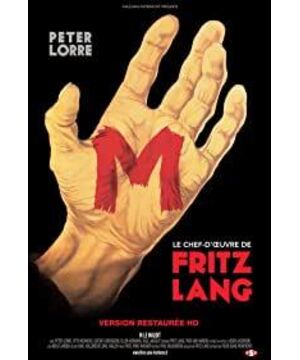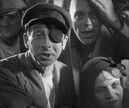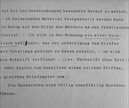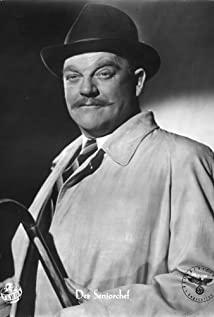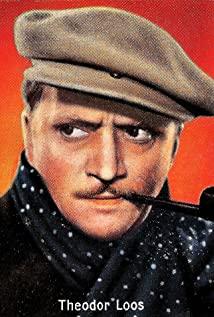Creation era background
Germany in 1931
As the second largest party in the German parliament and a dangerous far-right ideology, the Nazis advocated the suppression and genocide of minorities in order to expand the interests of the Aryan race.
Director Fritz and starring Peter Lowe are both Jewish.
Laid the foundation stone for thrillers
"M is the Murderer" is one of the first films to explore the use of music and sound to serve the plot. Its innovative use of light and shadow inspired German film noir. In addition, it also represents the evolution of the film to a more complex and delicate form, creating a pattern: in the movie designed moral and philosophical questions , the audience can draw their own answers and their own moral beliefs view it.
Narrative structure
The topics discussed in the film follow an argumentative writing structure:
a. Introduction to an overview of the topic
b. Arguments and inference procedures supporting the argument
c. Draw a conclusive hypothesis (but
Movies express opinions through shots, scenes, performances, editing, and montages instead of sentences.
In fact, this kind of narrative structure has already been demonstrated in Fritz's most famous early work "Metropolis".
a. The beginning of the movie throws us an issue
In a few minutes to explain the background, a child killer cast a shadow of terror on the city. The children sang his rhetoric. The parents worried about the safety of the children. The children crossed the road with the help of the police. This is a social environment that cares for the weak.
In sharp contrast
The shadow of the murderer when he passed the wanted warrant full of his crimes.
The film almost gives us an omnipotent experience so that we can analyze it from various angles.
Franz showed the impact of serial killings on the town. The suspicion and tension caused innocent people to attack each other, affecting parents, the public, the police and criminal gangs.
b. When analyzing the criminal’s notes, the psychologist judged that he was insane
To please yourself by stretching the corners of your mouth playfully in front of the mirror (when seeing a child and trying to calm down the urge to commit a crime)
Beckett's whistle before killing, brisk and childlike tunes (contrast with tragedy, forming a stronger meaning)
Whistle (external impulse that cannot be suppressed by inner desire)
Director Franz did not make Beckett's role lovable
Instead, it helps us understand him by showing his living environment. We saw him struggling to restrain himself, and also saw his fear and loneliness, but did not sympathize with him.
It also allows us to see the influence of his sins, the heartbroken parents of the victims, the city crushed by fear and suspicion.
c. The "trial" in the last scene
We listened to the complaints of the citizens and the prosecutor, as well as his defenses.
If let him live will bring more killings, Beckett insisted that he was out of control when he committed the crime and should not be tried.
Finally, he was taken to the real court by the police, and the moment the court pronounced the sentence came to an abrupt end.
We become judges
When we are faced with such a philosophical question: how much we are willing to sacrifice to achieve the greatest happiness of the most people.
The exchange of blood for blood and tooth for tooth will not turn the audience into a Nazi, but it has aroused a kind of thinking, if we were to govern this society, what would we do?
The techniques and core ideas used in "M" are still applicable in today's society, a question that has no standard answer.
In the end, our answer will determine our three views and decision-making
We still have no answer.
View more about M reviews


